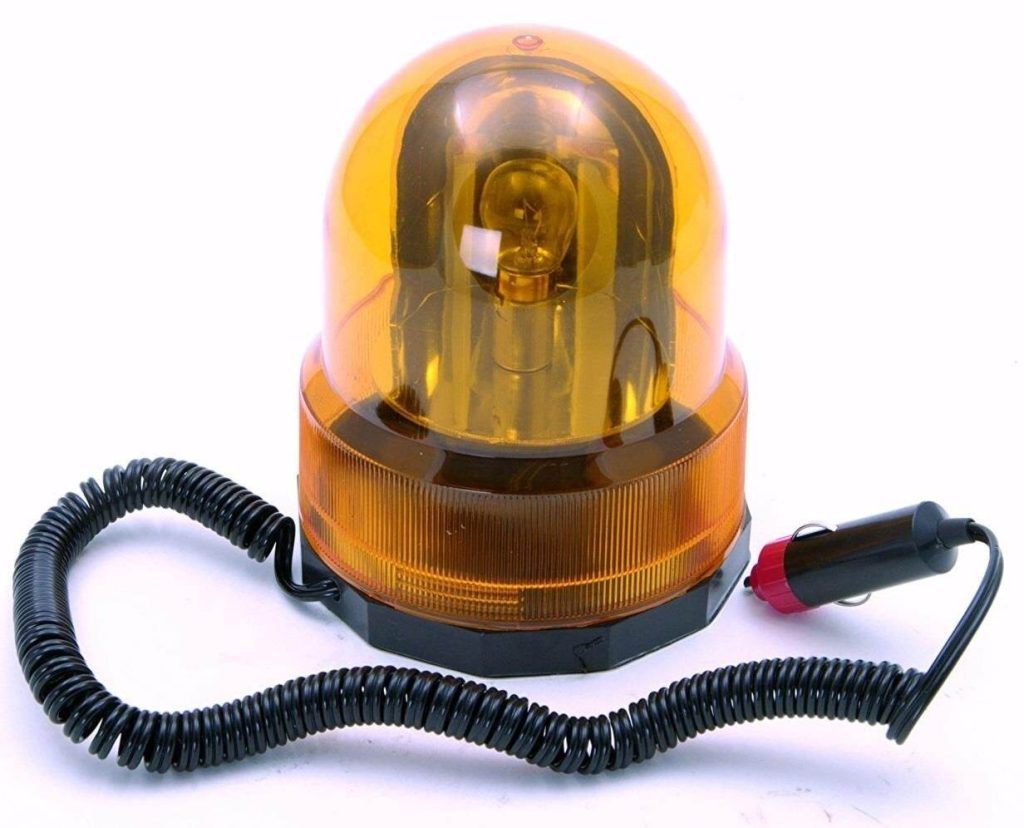A beacon light similar to flashing police lights can be specifically handy during a vehicle breakdown or similar distressful conditions for sending out visual distress calls. Want to build it? Learn how here.
How the Circuit Functions
It may happen that you find yourself stranded with a disabled motor vehicle in the middle of a remotely located area and feel the need for a device that could transmit a visual alarm signal to the police or a distant passerby. A breakdown beacon light similar to police lights can be used to flash a powerful light and send out a distress call loud and clear to anybody around or even far away. It can also act as a warning indicator for the other passing vehicles during a foggy night, avoiding the possibility of an accident. The proposed circuit may be useful for many such similar circumstances. The unit is powered from your vehicle’s battery itself.
The circuit has a rather unusual method of operation. Involvement of two transistors often means that they would conduct alternately to create the required oscillating effect, as in multivibrators. Here, this is not the case- rather the whole system functions in an interesting regenerative circuit.
The whole functioning may be understood from the following points:
Referring to the circuit diagram (click to enlarge), we see that a potentiometer VR1 is connected across the base of the transistor T1 and ground, via R2.
The setting of VR1 is very critical. Practically we find that by varying VR1 to its extremes either locks the oscillations of the circuit and keeps the lamp permanently ON or completely shuts it OFF.
The intermediate positions of VR1 are able to sustain the oscillations and also provide a variable range as desired.
Consider VR1 set somewhere in the midway. On applying power to the circuit, initially T1 gets slightly biased and turns ON a bit. This leaks out some current to the base of T2 through the collector of T1 via R4. T2 instantly turns ON, though quite feebly; it charges C1 through R1, R3 and T2.
The charging of C1 means pulling the base of T1 more towards ground (via T2, R3 and C1) and this makes it conduct more heavily. This also makes T2 conduct harder as now it is receiving more current from the collector of T1, switching ON the lamp fully. However, as C1 gets fully charged, the base of T1 is restricted from receiving the negative bias. T1 now is no longer able to cater the base of T2, inhibiting its saturation.

Due to this the collector of T2 becomes more positive and enters through C1 to the base of T1 to completely shut it OFF. The lamp and the transistor T2 therefore also completely shuts OFF.
The completion of the above procedure again prompts C1 to slowly discharge through R1, R3 and the lamp. Once it is fully discharged, the cycle repeats all over again initiating a rhythmic oscillation and the flashing of the lamp.
The rate of the flashing will depend on the values of VR2, T3 and C1 and also to some extent on the setting of VR1. The generated oscillations are in a regenerative form, and hence the circuit may be called a regenerative oscillator.
Construction Clues and Parts List
As the circuit is pretty basic, constructing it should be very straightforward and may be completed within minutes. Use of a general purpose board will be quite adequate, just fix the components and interlink their leads by soldering as per the given circuit schematic. The transistor T2 may require a heat sink if a continuous operation of the circuit is desired. The whole assembly may be enclosed inside a tough plastic box, keeping the bulb protruding out of it. The bulb may be covered by another transparent acrylic top to avoid mechanical damage. The inside of the transparent cap should be covered with a red transparent gelatin paper so that the light produced is red and distinctly visible up to far distances.
You will require the following parts for this beacon light (police lights) circuit:
R1 = 5K6,
R2 = 10K,
R3, R5 = 1K,
R4 = 56 Ohms,
VR1 = 47K,
VR2 = 10K,
C1 = 10u F/ 25V,
T1 = BC 557B,
T2 = D1351, D313, D880 (Any one will do),
Lamp = Car Side Indicator Bulb – 12 V/2Amps.
General Purpose Board,
Suitable Enclosure with a Glass Cover for the Lamp.


